We have flown in and out of the Marseille Provence Airport and shopped at the nearby IKEA quite a few times. However, we have only visited Marseille twice despite its proximity to Sablet and I have two cousins that live there and as I told you
here, my father lived there when he was young.
I have felt we were missing out by not going to Marseille so I had been looking at articles about Marseille, especially those that talked about the best places to eat there. Last spring, there was an article in Saveur Magazine entitled
"City by the Sea" by Alexander Lobrano that got my taste buds going for a visit to Marseille.
So when we got to Sablet last spring, one of the first things I did was call cousin Ginette who lives in Marseille and cousin Annick who lives near Aix-en-Provence but knows and loves Marseille to set up a date to visit Marseille.
Marseille was founded by the Phoceans (from the Greek city of Phocaea, now Foça, in modern Turkey) in 600BC and is one of the oldest cities in Europe. The town is a far cry from the Cézanne paintings and Provençal clichés of sleepy villages, "pétanque" players and Marcel Pagnol novels.
With around one million inhabitants, Marseille is the second largest city in France in terms of population and the largest in terms of area. The people of Marseille have varying ethnic backgrounds, with a lot of Italians and Spanish having immigrated to the area after the second world war. Currently, over one third of the population of Marseille can trace their roots back to Italy.
We decided to visit sites that we had not visited on our previous visit when we toured the Le Panier District of Marseille and climbed up to Notre Dame de la Garde Cathedral. L’Opéra de Marseille, known today as the Opéra Municipal, is the opera company located in Marseille. In 1685, the city was the second in France after Bordeaux to have an opera house which was erected on a tennis court.
The present day opera house, the Opéra Municipal de Marseille, dates from its opening on December 4, 1924. It seats 1,800. It features a classic urn-shaped auditorium, three rings of boxes, two balconies and a gallery.
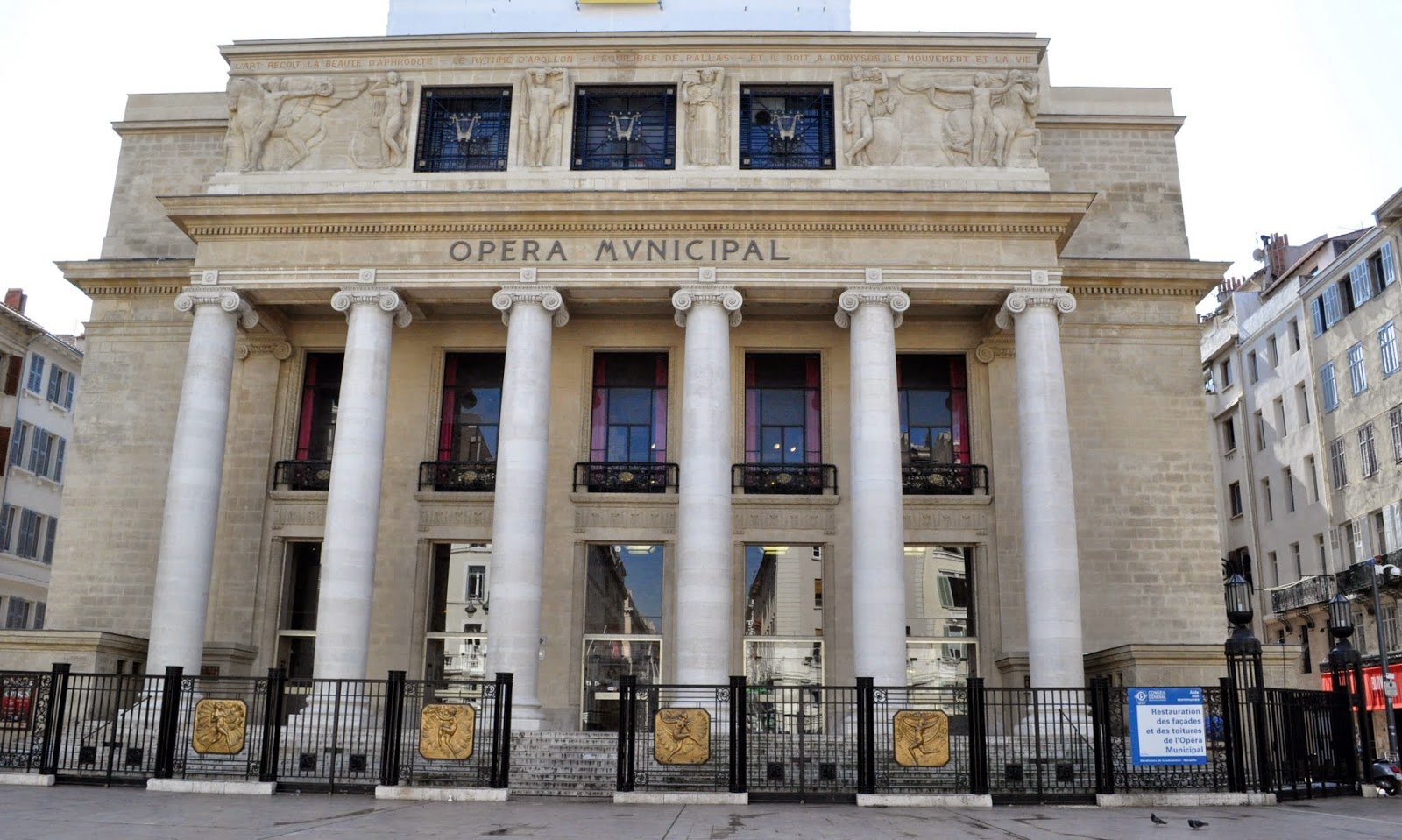 |
| Municipal Opera House |
Toussaint Blaize founded this Herboristerie (translates "herbalism") for the practice of herbal medicine in 1815. This boutique has been run by six generations of the Blaize family at this location since then. It is one of the oldest shops in Marseille.
 |
| Blaize Herboristerie |
This marvelous statue of a giraffe and its baby is right on La Canebière, the main street of Marseille. It commemorates the arrival in the city in 1826 of a giraffe given as a gift to King Charles X by Egypt's Mohammed Ali.
 |
| Statue of a giraffe and its baby on La Canebière |
Saint Vincent de Paul Church in Marseille is also called the L'Église des Réformés. It is located at the north end of la Canebière, Marseille's most famous street.
 |
| Saint Vincent de Paul Church |
The monument aux Mobilisés was built on La Canébière in 1894 in memory of the Marseille soldiers who died during the 1870 war.
 |
| Monument des Mobiles (1894) War Memorial on La Canébière |
I always try to choose an excellent place to eat when we go visit a new town or village. About the same time his article about Marseille appeared in Saveur Magazine, Alexander Lobrano wrote a piece for his blog where he said about La Boîte à Sardine that "There’s simply no better place in this port town to get a really good reasonably priced feed of just-out-of-the-water seafood." That was high praise for me, so we reserved there for lunch.
 |
| La Boîte à Sardine Restaurant |
 |
| Sardine cans from around the world |
 |
| A menu board at La Boîte à Sardine Restaurant |
 |
| Another menu board at La Boîte à Sardine |
 |
| A starter of deep fried artichokes |
Since this day was about being with family and eating fresh seafood, I didn't take a lot of pictures or write too many notes. Please forgive me.
 |
| Shirley and I with the cousins at La Boîte à Sardine |
Our friend Kari was with us for the visit to Marseille and she ordered fish and chips. We were all quite shocked to see the "fish" was whole deep fried fish, not pieces like we get in the USA. It reminded me of the scene in the movie "A Good Year" where Max who is played by Russell Crowe tells some rude American diners "MacDonalds is in Avignon, fish and chips in Marseille. Allez."
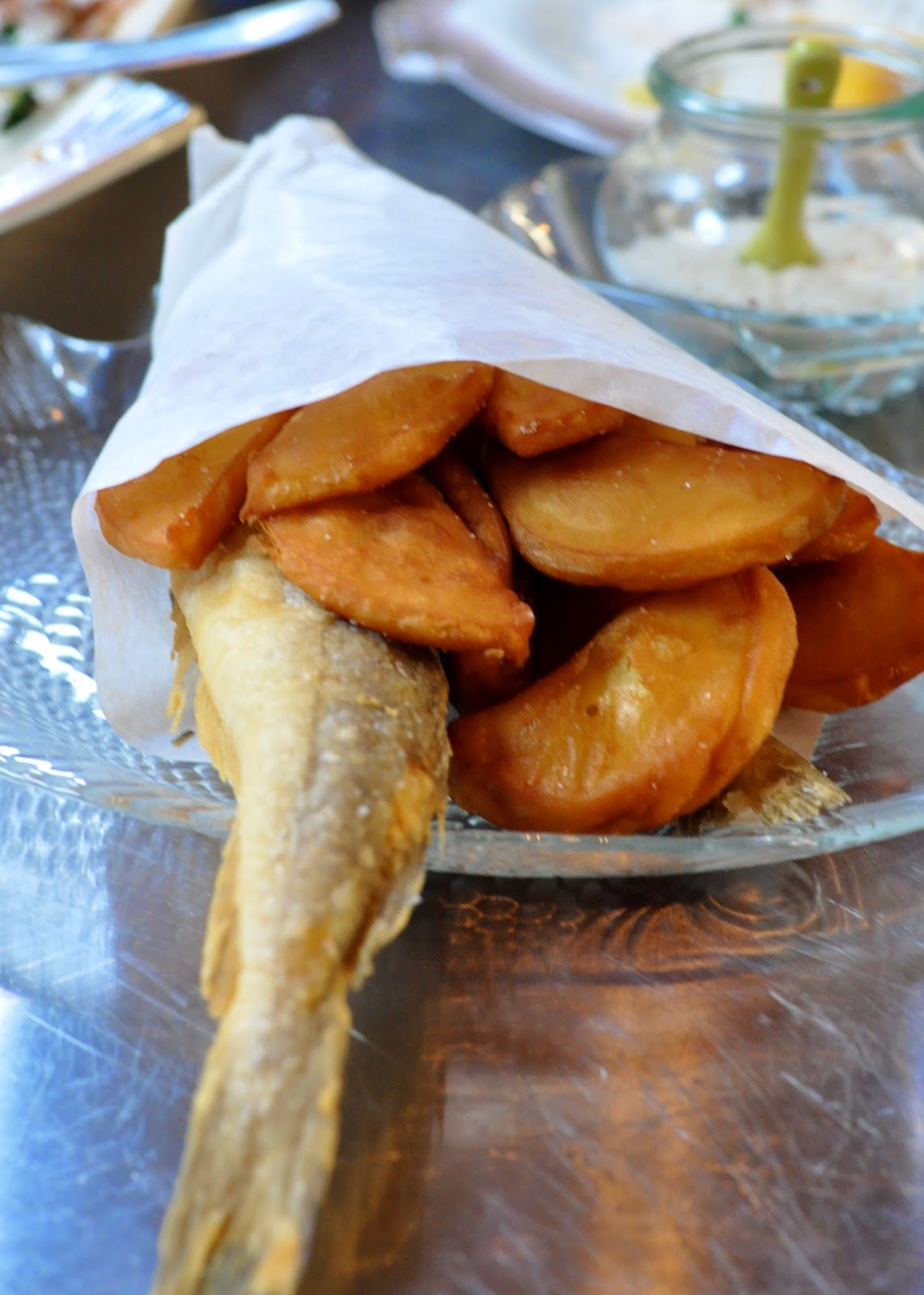 |
| Fish and Chips |
Shirley and I shared a whole roasted fish. It was fresh out of the water and perfectly cooked and served with fried polenta and ratatouille.
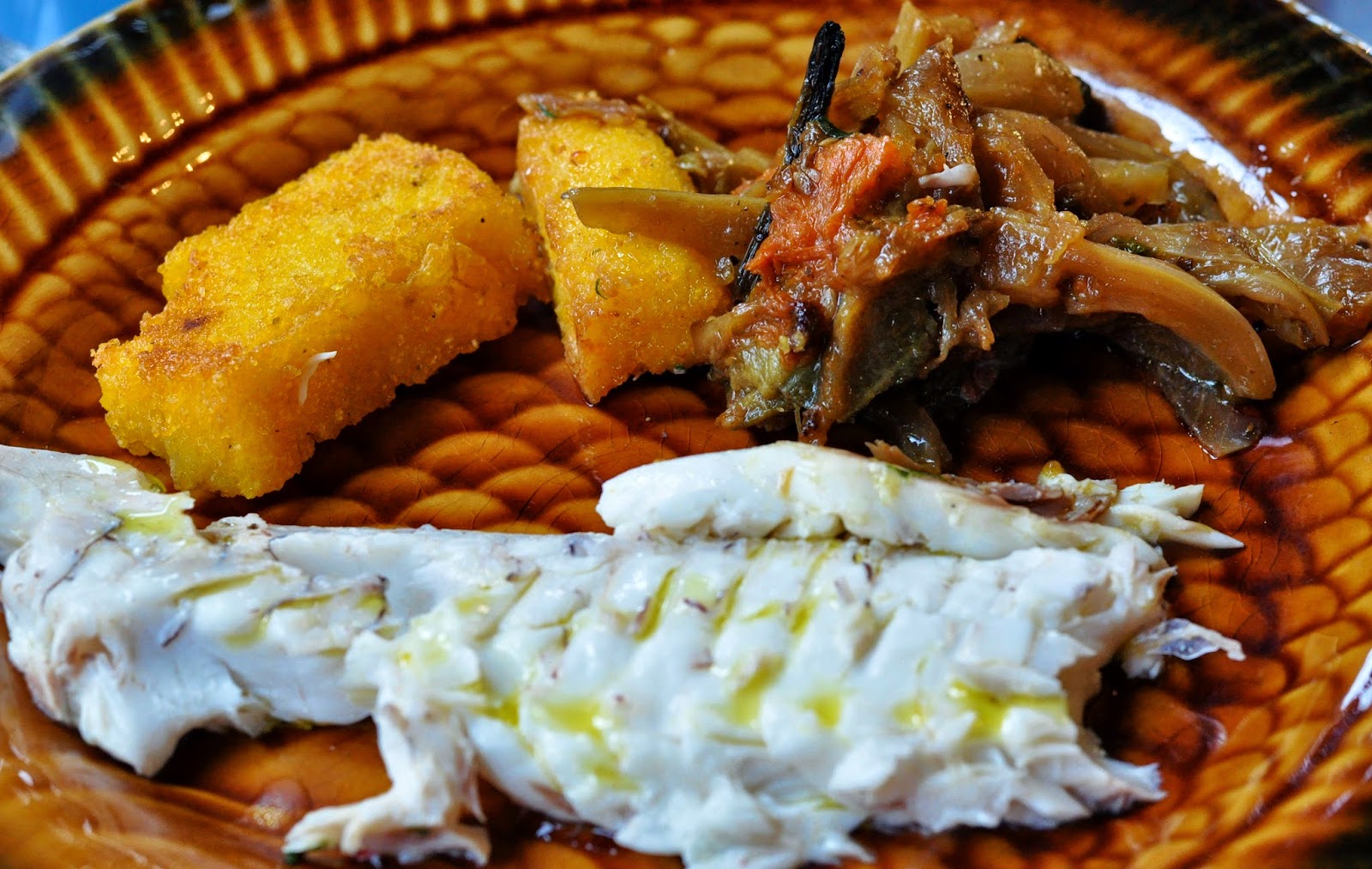 |
| Whole fish with fried polenta and ratatouille |
We are trying to set a date for a return during this visit to Sablet. Stay tuned, I will let you know in a future post if we were able to make it happen or not.
 |
| Shirley and I with cousin Annick |
 |
| A café in Marseille |
The Savonnerie Marseillaise de la Licorne has been making soap for more than 100 years in this location. The soap is made from a combination of oil and soda and then boiled before honey, lemon, lavender and other ingredients are added which give the soap great aroma. We bought several and they smell great.
 |
| Savonnerie Marseillaise de la Licorne |
 |
| Apartments and shops near a Marseille water park |
 |
| Bright colored café |
 |
| Marseille street |
 |
| Marseille street |
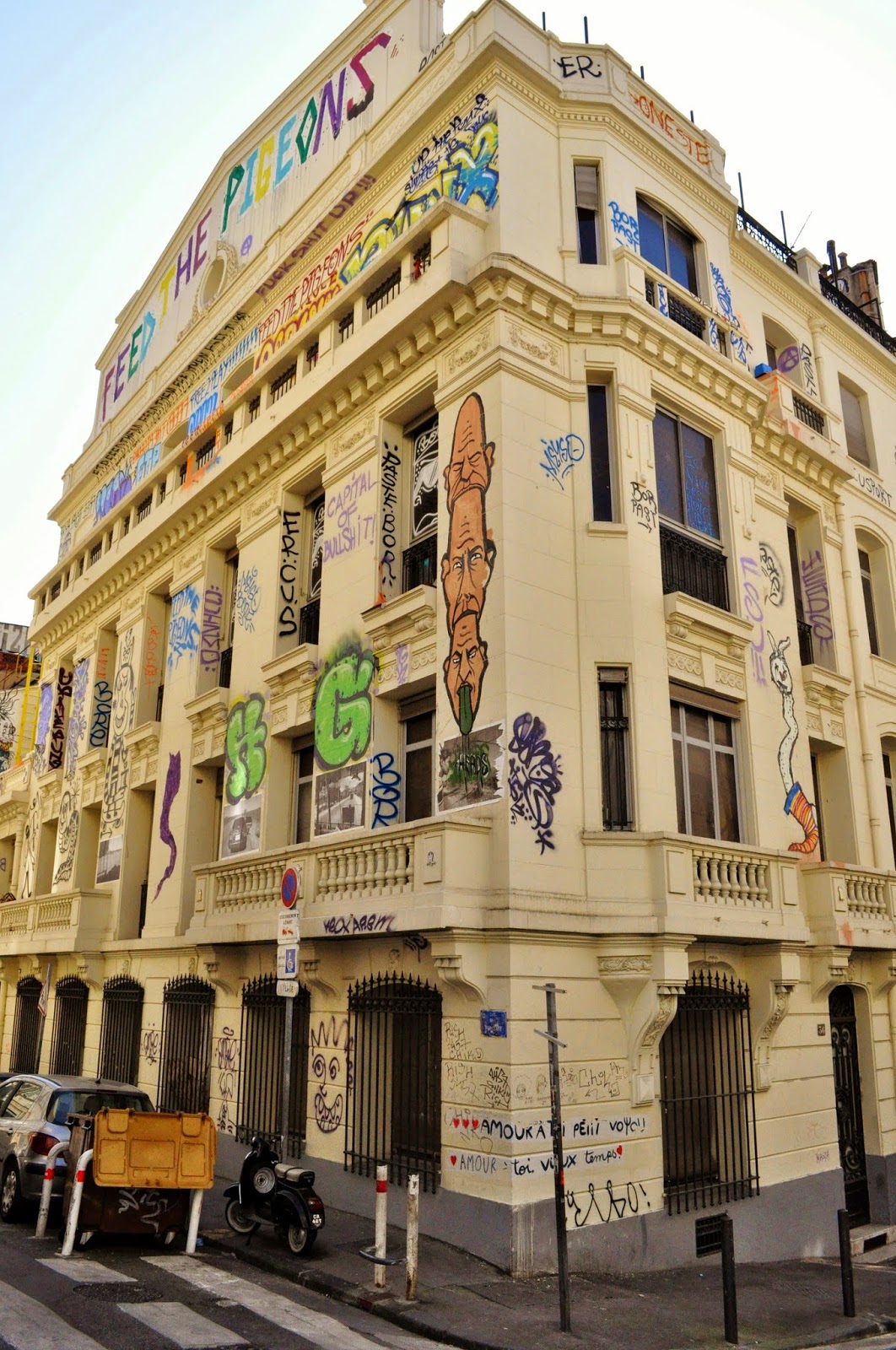 |
| Lots of colorful graffiti in Marseille |
 |
| A square in Marseille |
Fort Saint-Jean is a fortification in Marseille, built in 1660 by Louis XIV at the entrance to the Old Port. Since 2013 it is linked by two bridges to the Le Panier district and to the first French national museum to be located outside Paris; called Musée des Civilisations de l'Europe et de la Méditerranée.
 |
| Fort Saint-Jean overlooks the Old Port |
The Four des Navettes is the oldest bakery in Marseilles, located on the Voie Sacrée (sacred way) leading to the Saint Victor Abbey. It belongs to Master Baker Jean-Claude Imbert and his son Nicolas.
The secret of the Four des Navette recipe has been jealously guarded for more than 200 years. Three different families have owned it since it first opened in 1781 and have kept the know-how to themselves, handing it down from one generation to the next.
The vaulted oven, built at the end of the 18th century is still in use today and helps to provide the quality of the navettes - which is all it’s used for.
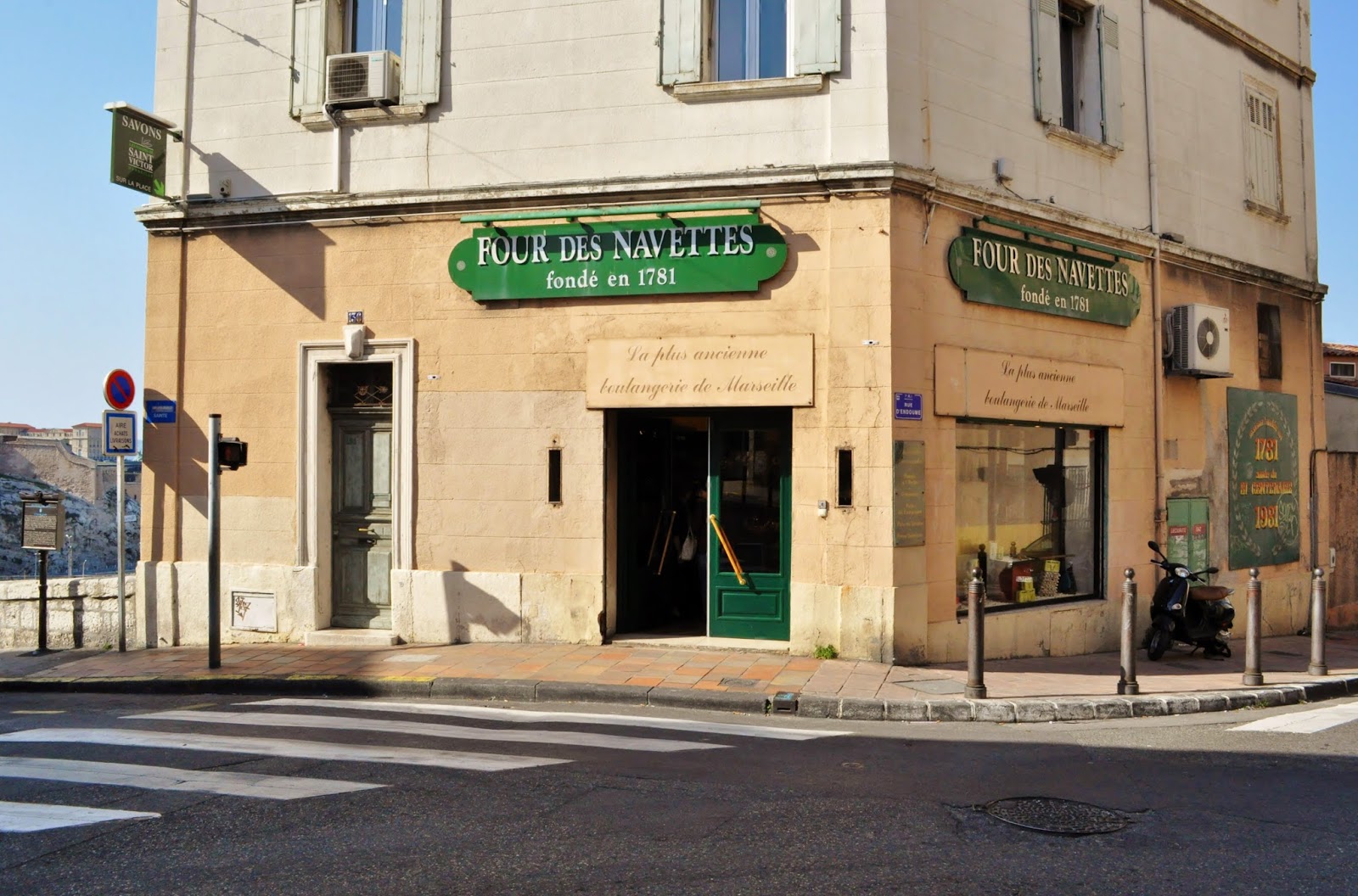 |
| Four des Navettes |
The octave of Candlemas begins on February 2, at 5am, with the procession of the Black Virgin. The procession starts on the Quai des Belges and proceeds to Saint Victor's Abbey. In front of the Abbey, the Archbishop, in the presence of the Mayor, gives the blessing of the city, the sea, the Abbey's green candles, and the Candlemas' Solemn Mass is celebrated.
At 8am, the Archbishop comes to the Four des Navettes to bless the oven and the navettes! Tradition says that you keep a navette which has been blessed by the Archbishop along with a green candle until the next Candlemas to bring happiness to your family. A year later, you burn the candle and eat the navette, because they keep for a whole year!
In case you don't know, navettes are a cylindrical sweet-pastry from Marseilles with a "fleur d'oranger" flavor. It's baked without yeast in the shape of a boat (navette), an oval 7-8 cm long with the ends tapered in sharply,
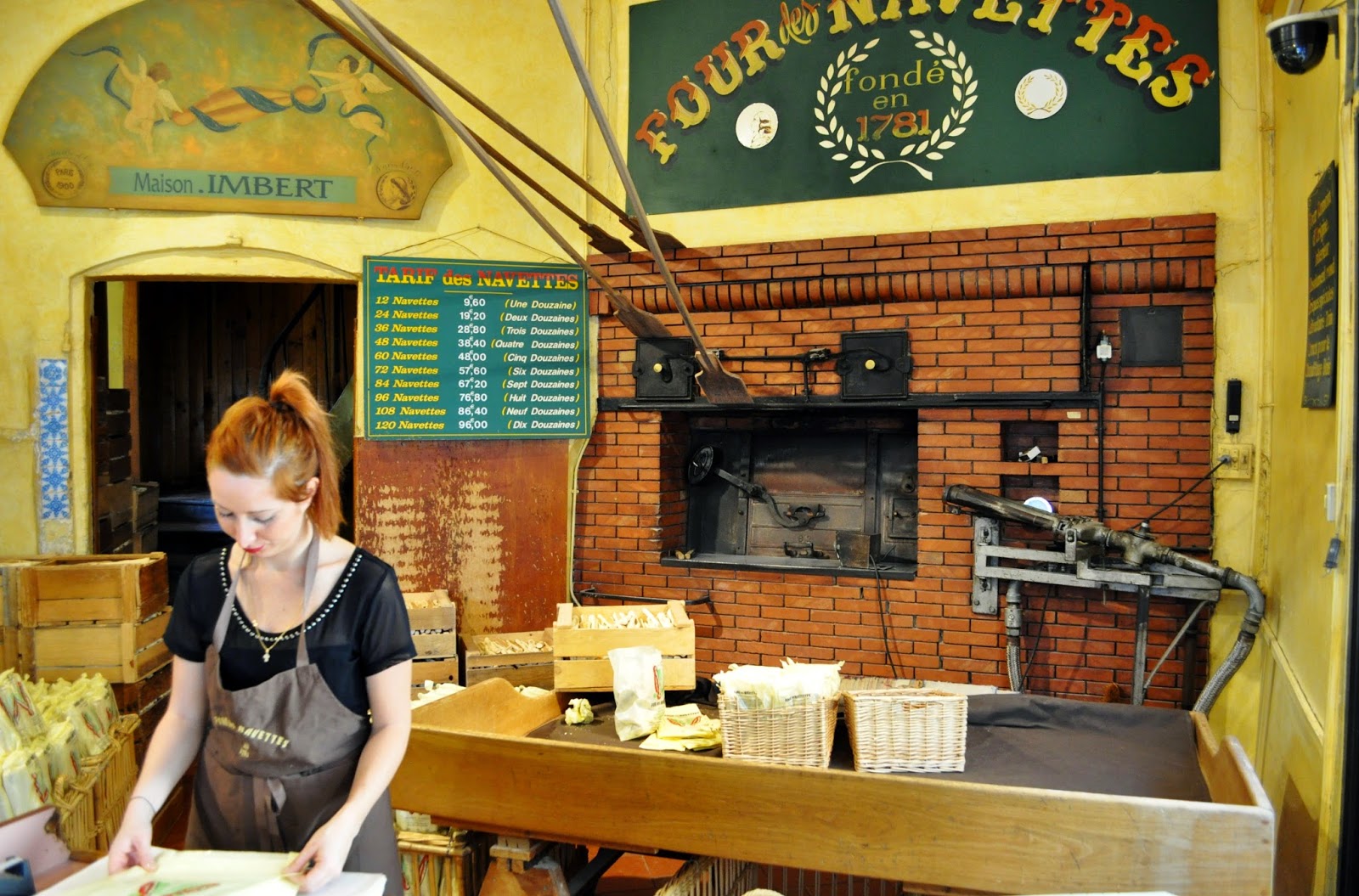 |
| Inside Four des Navettes |
Saint Victor Abbey was built in the 5th century on the burial place of Saint Victor, a Roman martyr who had died two centuries previously. The abbey was destroyed several times over the years, until being fortified by Pope Urban V in the 14th century.
 |
| Abbaye de Saint Victor (Saint Victor Abbey) |
The Monument aux morts de l'Armée d'Orient by Antoine Sartorio stands on a rocky promontory on Marseille's seafront and remembers all those Frenchmen who gave their lives during the 1914-1918 war fighting overseas particularly in the Far East.
The center of the arch has a carving of a crescent and a star. Sculptures of air force personnel and soldiers stand on one side of the arch together with a winged angel whilst on the other side is another winged angel and on a pedestal in the center of the arch is a bronze "angel of victory" her arms lifted to the skies. A stairway leading down to the sea completes the memorial.
As I told you
here, this monument is near the Vallon des Auffes and a very good restaurant for bouillabaisse called Fonfon.
 |
| Monument aux Morts de l'Armée d'Orient et des Terres Lointaines |
If you go to Marseille and love fresh, perfectly cooked seafood, don't hesitate to go to La Boîte à Sardine. Don't take my word for it, listen to
Alexander Lobrano.
La Boîte à Sardine Restaurant
2 Boulevard de la Libération
13001 Marseille
Website: www.laboiteasardine.com
Tel: 04 91 50 95 95